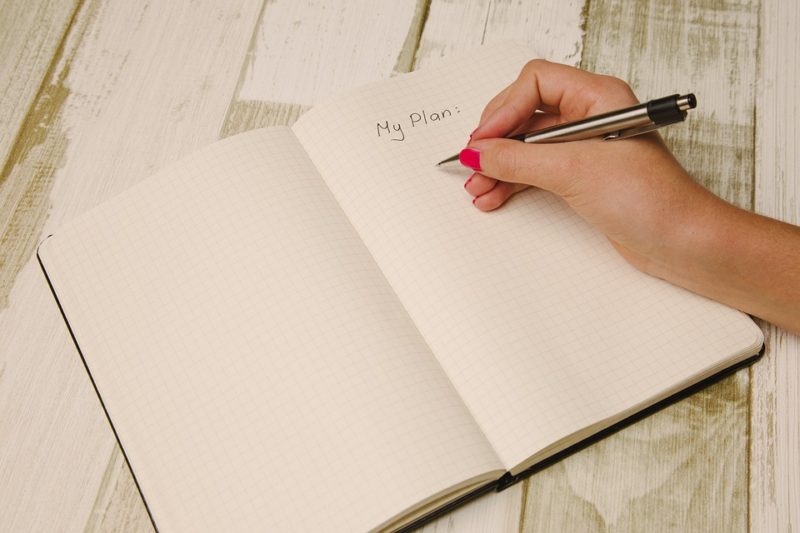Ride the Tide of Energy ,Our energy levels come in ebbs and flows and we are all beholden to this natural ‘cycle’. At certain points during the day you will feel energetic and at others, you’ll feel listless and exhausted. Instead of trying to force your body to be energetic when you need it to be and tired when you want to go to bed, try choosing you activities based on how you feel. This is the idea of ‘riding the tide’.
Again, it’s about acknowledging that there is a limit to how much energy you can utilize in any given day and planning your activities out smartly as a result of that. In this article, we’re going to look at the energy cycles that your body goes through in any given day. We’ll explore what causes those energy cycles and we’ll look at how you can actually influence them in order to help them align more usefully with the activities that you need to commit yourself to.
Why Your Body Has Energy Cycles
Let’s start by addressing why your body goes through energy cycles in the first place. And the answer comes down to evolution and survival. We have adapted to function this way, because it helps us to survive in a dangerous environment and to manage energy levels in the wild. The problem is that we’re no longer in the wild and we now need energy at different times.
Ultimately, these energy systems work by splitting us into two states. These are:
- Anabolic
- Catabolic
An anabolic state is also referred to as ‘rest and digest’. This is when we’re relaxed, when we’re happy and when we’re able to just switch off and chill. During this time, the body has plenty of fuel (energy) and it is able to send that fuel where it’s needed to help us repair muscle, lay down memories and restore ourselves during sleep.
Conversely, a catabolic state is also referred to as ‘fight or flight’. This is  when we’re either in danger, or we’re starving. Either our blood sugar is low, or we are being faced by a predator or a threat.Either way, the reality is that our bodies need to act in order to keep us alive and thus we start burning fat and even muscle to provide fuel. Of course you’re not always asleep or scared for your life but you are always teetering slightly more to one of these extremes or the other.
when we’re either in danger, or we’re starving. Either our blood sugar is low, or we are being faced by a predator or a threat.Either way, the reality is that our bodies need to act in order to keep us alive and thus we start burning fat and even muscle to provide fuel. Of course you’re not always asleep or scared for your life but you are always teetering slightly more to one of these extremes or the other.
When you wake up in the morning, your blood sugar levels are low and this is what causes you to wake up. You’ve been fasting and your body is now running on empty, which triggers the release of stress hormones like cortisol. When you’ve just eaten meanwhile, your body receives the signal that it is satiated and that the blood is filled with sugar.
Thus it releases insulin to extract that sugar and it releases serotonin which makes you feel good.That serotonin eventually converts to melatonin – the sleep hormone – and the body is able to rest and use all that good stuff to help repair our bodies. This cycle of Anabolic / Catabolic, stop/go continues all throughout the day. It is also closely linked with our ‘circadian rhythm’, which is our sleep-wake cycle.
Psychologists have studies our circadian rhythms extensively and what they’ve discovered is that they are determined by two main factors: ‘external zeitgebers’ (time givers) and ‘internal pacemakers’. In short, we listen to the cues from our body, as well as the cues from the world around us – like the amount of light and social cues.
This is why the daylight lamp I mentioned in the last chapter is so valuable – the light stimulates the release of cortisol and nitric oxide, both of which help the brain to wake up. It’s also why it’s so important that we get a few minutes to let our bodies cool down in the evening without unnatural light. Having a vitamin D supplement also helps – our bodies produce vitamin D when they receive direct sunlight.
Another factor that contributes to us needing to sleep, is the build-up of two substances in the brain: adenosine and pro-inflammatory cytokines. Adenosine is the main by-product of the brain’s energy process. That is to say, when your brain cells are working, they’re constantly creating adenosine as well.
The harder you think and the more active you are, the more adenosine builds up.And as it builds up, it suppresses activity – making it harder and harder for us to concentrate and contributing to ‘brain fog’. Eventually, this becomes too much and we need to sleep to clear it. Meanwhile, pro-inflammatory cytokines cause brain inflammation.
These too build up as a result of our immune system working over time and they’re highest in number when we feel sick. This is why we feel tired, groggy and full of brain fog when we’re ill (which is partly our body’s way of telling us to hit the hay).
All this means that there are points in the day when we will feel our most awake and points when we feel our most asleep.Most of us will experience a serious crash around 4am and 4pm. We sleep deepest at 4am and we struggle to focus on work at 4pm. 4pm is the ideal time to schedule a break then. Better yet, if you can move your working day forward an hour, then you can come home at the point when you’re feeling most tired!
How to Manage Your Energy Levels
 While it’s a good idea to fit your work schedule around your energy, it would of course be slightly more convenient if you could alternatively fit your energy around your work schedule. Fortunately, there are some things you can do to alter your rhythms and help yourself to feel more energetic right when you need to.
While it’s a good idea to fit your work schedule around your energy, it would of course be slightly more convenient if you could alternatively fit your energy around your work schedule. Fortunately, there are some things you can do to alter your rhythms and help yourself to feel more energetic right when you need to.
One simple way to do this is to think about when and how you’re going to eat. Remember: when we eat, it stimulates the sudden release of sugar into the blood, which can result in us feeling very tired and lethargic immediately afterward. This is great an hour or so before bed (giving you time to digest) but it’s not so useful if you were planning on being useful that evening.
A simple example of this is what happens when you sit down and eat dinner on the couch in the evening. Any hopes you might have had of being productive at this point are practically thrown out the window. So instead, if you wanted to tidy the house, try doing it before you eat, while your body is still flooding you full of wakefulness hormones.
Another way to control your energy levels through your diet is to think about what you want to eat. A big mistake is to eat simple carbohydrates, which are things like cake, like bread and like white pasta. These release sugar quickly into the blood stream, which results in a sudden energy ‘high’. However, as we now know, that will be released by a sudden ‘crash’ when the sugar is taken up and the brain releases melatonin to put you in a restorative mode.
The solution to this is to try and keep your blood sugar at a slightly more stable and level point throughout the day. In theory, this should provide you with a steady flow of energy, while at the same time avoiding sugar crashes or sudden spikes in energy.
To do this, you can focus on getting more energy from both complex carbohydrates (carbohydrates that are slower to digest, normally including more fiber and fat) as well as fats (which also digest slowly in the gut). Both these methods will provide a consistent level of energy as you go about your day and may also have other health benefits – potentially reducing inflammation.
Changing the order of your food – even just by shifting everything forward an hour – can help to change the order and length of your cycles. In fact, when travelling abroad to different time zones, many people will utilize a system of changing their diet in order to readjust their circadian rhythms and body clocks. Another tip is to consider taking power naps.
This is something that some people have a lot of success with but there is a trick to it which will once again involve thinking in terms of cycles. This main objective is to avoid waking up during a sleep cycle. Sleep cycles tend to last about 90 minutes but it takes 20 minutes to enter the first heavy stage of sleep.
Sleeping for just 10 minutes can be a great way to get a quick energy boost then, while sleeping for 90 minutes should provide a deeper sleep while helping you to avoid waking up during ‘SWS’ (slow wave sleep) and experiencing high levels of sleep inertia as a result.
Finding a Routine for Optimum Performance
The key thing to take away from this, is that you need to consider the role of your body in your energy levels. What you eat, what time you sleep and even the light outside can all affect your energy levels and your mood. Even the temperature can have a huge impact – if you are in a cold room, this will increase your production of adrenaline and nore pinephrine, thereby making you feel more alert.
Conversely, if you’re in a warm space, then you’ll feel more relaxed and sleepy and may find it harder to stay awake.
Note that we are actually more creative when we’re relaxed. This allows our mind to wander and it’s when the mind wanders that it is able to form novel connections between concepts, thereby creating entirely new ideas.
You can even split your work into ebbs and flows this way then – dividing it between periods of creativity where you come up with new ideas and directions and periods of productivity where you go full steam ahead to work as hard as possible.











